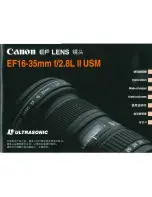
______________________________________________________________________________________________________
PRINT Rev 2: 10/19
©Art Optical Contact Lens, Inc.
s:lb300.iw
4. Fill contact lens carrying case with the recommended disinfection and storage solution and place lens in the
proper cells and soak as recommend in solution labeling.
Note:
DO NOT HEAT THE DISINFECTION SOLUTION AND LENS.
Caution: Lenses that are chemically disinfected may absorb ingredients from the disinfecting solution which may
be irritating to the eyes. A thorough rinse in fresh, sterile rinsing solution prior to placement on the eye
should reduce the potential for irritation.
EMERGENCIES:
If any chemicals of any kind (household products, gardening solutions, laboratory chemicals, etc.) are splashed into the
eyes, you should:
FLUSH EYES IMMEDIATELY WITH TAP WATER AND IMMEDIATELY CONTACT YOUR EYECARE
PRACTITIONER OR VISIT A HOSPITAL EMERGENCY ROOM WITHOUT DELAY.
WHEN TO CALL YOUR PRACTITIONER?
Certain symptoms may be early indicators of potentially serious problems. A careful examination of your lens, and
professional examination of your eyes, may be required. Remove the lens following the instructions outlined in this
guide, and call your eyecare practitioner if:
1) Your eye becomes red and feels irritated or "gritty".
2) You notice a change in your vision or see rainbows or halos around objects.
3) You experience discomfort and/or sensitivity to lights.
A good general policy is:
“IF IN DOUBT ... TAKE THE LENS OUT” and contact your eyecare practitioner.
Learn and Use Proper Lens Care Habits:
1) Follow Instructions.
2) Handle Lens Properly.
3) Learn How to Put On and Take Off Your Lens.
4) Keep Your Lens Clean.
5) Disinfection is a Necessary Security.
INSTRUCTIONS FOR MONOVISION WEARER
You should be aware that as with any type of lens correction, there are advantages and compromises to monovision
contact lens therapy. The benefit of clear near vision in straight ahead and upward gaze that is available with
monovision may be accompanied by a vision compromise that may reduce your visual acuity and depth perception
for distance and near tasks. Some patients have experienced difficulty adapting to it. Symptoms, such as mild
blurred vision, dizziness, headaches and a feeling of slight imbalance, may last for a brief minute or for several
weeks as adaptation takes place. The longer these symptoms persist, the poorer your prognosis for successful
adaptation. You should avoid visually demanding situations during the initial adaptation period. It is recommended
that you first wear these contact lenses in familiar situations, which are not visually demanding. For example, it
might be better to be a passenger rather than a driver of an automobile during the first few days of lens wear. It is
recommended that you only drive with monovision correction if you pass your state drivers license requirements
with monovision correction.
Some monovision patients will never be fully comfortable functioning under low levels of illumination, such as
driving at night. If this happens, you may want to discuss with your eyecare practitioner having additional contact
lenses prescribed so that both eyes are corrected for distance when sharp distance binocular vision is required.
If you require very sharp near vision during prolonged close work, you may want to have additional contact lenses
prescribed so that both eyes are corrected for near when sharp near binocular vision is required.
Some monovision patients require supplemental spectacles to wear over the monovision correction to provide the
clearest vision for critical tasks. You should discuss this with your eyecare practitioner.
It is important that you follow your eyecare practitioner’s suggestions for adaptation to monovision contact lens













